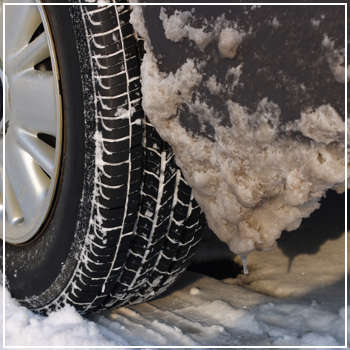 Living in New England during the winter can take its toll on your vehicle, especially when it comes to the paintwork. Harsh conditions like snow, ice, and road salt can wreak havoc on your car's finish, leading to scratches and rust spots. Proper care and maintenance are essential to keep your car looking its best throughout the season.
Living in New England during the winter can take its toll on your vehicle, especially when it comes to the paintwork. Harsh conditions like snow, ice, and road salt can wreak havoc on your car's finish, leading to scratches and rust spots. Proper care and maintenance are essential to keep your car looking its best throughout the season.
One of the biggest culprits of paint damage is rock salt, which is often spread on roads to improve traction but can accelerate rust formation. Even minor scratches or chips can become entry points for corrosive elements, so it’s important to address any issues promptly. Here are some practical steps you can take to protect your car's exterior.
Regular Washing is Key
Keeping your car clean is one of the simplest ways to prevent damage. Aim to wash your vehicle every two weeks or after heavy storms. Be mindful of your cleaning technique to avoid unintentional scratches:
- Use a car-specific cleaner to avoid stripping the paint.
- Opt for a pressure washer instead of scrubbing with a sponge, as the latter can cause micro-scratches.
- After washing, dry the car thoroughly with a soft microfiber cloth.
- Finally, apply a coat of wax to add an extra layer of protection.
Tackle Scratches Early
Even small scratches can lead to rust over time. If you spot any imperfections, get them repaired by a professional as soon as possible. A fresh coat of paint over the damaged area will help prevent further corrosion and ensure a seamless finish.
Choose the Right Cleaning Tools
Using the wrong tools can do more harm than good. Avoid using sharp objects like shovels to remove snow, as they can easily nick the paint. Similarly, ice scrapers designed for windows aren’t ideal for painted surfaces—they can leave unsightly marks. Instead, invest in a soft-bristle brush specifically meant for car exteriors to gently remove snow and debris without causing damage.
Apply Wax Regularly
Wax not only enhances shine but also acts as a shield against environmental damage. Apply a high-quality polymer wax at the beginning of the season, followed by occasional touch-ups with a spray wax for ongoing protection. Always work in shaded areas and let each layer cure before adding another. Finish by buffing with a microfiber cloth to achieve a smooth, glossy finish.
Provide Year-Round Protection
If possible, park your car in a garage to escape exposure to harsh weather and road salt. For those without garages, consider investing in a durable car cover or portable carport to safeguard your vehicle. Ensure the cover is waterproof and UV-resistant to offer maximum protection against the elements.
Remember, maintaining your car’s appearance doesn’t just enhance its curb appeal—it also helps preserve its value. If you need help with anything from a simple wax job to a complete repaint, trust DaSilva’s Auto Body for expert service. Give us a call today to schedule an appointment.
Safety Printing Ink,Anti Forgery Ink,Anti Counterfeiting Ink,Solvent Based Ink For Plastic,Solvent Based Ink For Silicone
Lauer Water-Based New Material(Foshan)Co.,Ltd. , https://www.lauerink.com